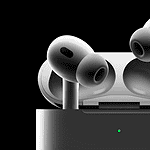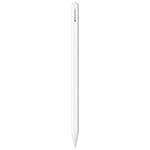Is your Mac’s Downloads folder getting cluttered? Over time, this folder can fill up with files you no longer need, taking up valuable storage space. You can easily delete downloaded files on a Mac by opening Finder, navigating to the Downloads folder in the sidebar, selecting unwanted files, and dragging them to the Trash or right-clicking and selecting “Move to Trash.”
For most Mac users, the Downloads folder becomes a dumping ground for installation files, documents, and media that pile up without notice. Cleaning this folder regularly helps your Mac run faster and keeps your file system organized. You can delete old downloads all at once or sort through them carefully to keep what matters.
If you use different browsers like Safari, Chrome, or Firefox, you might need to check their download locations too. These browsers sometimes store downloads in their own folders instead of the main Downloads folder. Getting rid of these extra files can free up significant space on your Mac’s hard drive.
Here are the steps to delete downloads on a Mac:
1. Open the Downloads Folder
- Click the Finder icon in the Dock.
- In the left sidebar, click Downloads.
(You can also pressCommand + Option + Lto go straight to the Downloads folder.)
2. Select the Files You Want to Delete
- To delete a single file: Click once on the file to highlight it.
- To delete multiple files:
- Hold the
Commandkey and click each file you want to delete. - Or press
Command + Ato select all files in the folder.
- Hold the
3. Move Files to the Trash
- Right-click (or Control-click) on the selected file(s), then choose Move to Trash.
- Alternatively, drag the files to the Trash icon in the Dock.
- You can also press
Command + Deleteto send selected files to the Trash.
4. Empty the Trash (Optional)
- Right-click the Trash icon in the Dock and select Empty Trash.
- Or open Trash, then click Empty in the top-right corner.
⚠️ Note: Once you empty the Trash, the deleted files are permanently removed and cannot be recovered.
That’s it! You’ve successfully deleted downloads on your Mac.
Key Takeaways
- Find your Downloads folder in Finder and remove unwanted files by dragging them to the Trash.
- Sort downloads by date or size to quickly identify large or old files taking up space.
- Empty the Trash afterwards to permanently delete the files and reclaim storage space.
Understanding the Downloads Folder in macOS
The Downloads folder is a central location where your Mac stores files you get from the internet and email attachments. It helps keep these files organized until you decide to move or delete them.
Location and Purpose of the Downloads Folder
The Downloads folder is found in multiple places on your Mac for easy access. You can find it in Finder by clicking on “Downloads” in the sidebar. It’s also available in the Dock with a folder icon that shows a downward arrow.
This folder serves as a temporary holding area for all files you download. When you click a download link in Safari, Chrome, or any browser, files automatically go here. Email attachments you save from Mail also end up in this location.
By default, the Downloads folder is located at:
/Users/YourUsername/Downloads
You can open it quickly by pressing Command+Option+L when in Finder.
Types of Downloaded Files
The Downloads folder can contain many different file types, depending on what you save from the internet. Common file types include:
- Documents: PDFs, Word files (.docx), spreadsheets (.xlsx)
- Media: Images, videos, music files
- Installation files: App installers (.dmg, .pkg)
- Compressed files: Zip or RAR archives
- Email attachments: Files saved from Mail app
Files in the Downloads folder can pile up quickly. Large files like videos or installation packages can take up significant space. PDFs from work emails or images from websites may be forgotten after viewing.
Many apps default to saving in the Downloads folder. For example, when you save an email attachment, it automatically goes to Downloads unless you choose another location.
Deleting Downloads via Finder
Finder is the easiest way to manage and delete downloads on your Mac. You can quickly navigate to your downloads, select what you don’t need, and remove them to free up valuable space.
Navigating to the Downloads Folder
Finding your downloads folder is simple with Finder. Open Finder by clicking its icon in the dock (the smiling blue face). Once Finder is open, you have several ways to reach your downloads:
- Click on “Downloads” in the sidebar
- Use the keyboard shortcut Alt+Command+L to jump directly to Downloads
- Click on the “Go” menu at the top of the screen and select “Downloads” from the dropdown menu
Your Downloads folder will open, showing all the files you’ve downloaded to your Mac. Files are typically arranged by date, with the newest downloads at the top. This makes it easy to find recent downloads that may be taking up space.
Selecting Files to Delete
Once in the Downloads folder, you can select items you want to remove:
- Select a single file: Simply click on it once
- Select multiple files: Hold the Command key while clicking each file
- Select a range of files: Click the first file, then hold Shift and click the last file
- Select all files: Press Command+A
You can also select multiple files while holding the Command key, then drag them to the Trash. For better organization, you can sort files by size to find the largest downloads taking up the most space.
Look at file dates to identify old downloads you no longer need. Files with duplicate names might be taking up extra space too.
Permanent Deletion Methods
After selecting unwanted downloads, you have several ways to delete them:
- Drag to Trash: Drag selected files to the Trash icon in your Dock
- Use keyboard shortcut: Press Command+Delete to move files to Trash
- Right-click deletion: Right-click (or Control+click) and select “Move to Trash”
To permanently delete downloads on your Mac, empty the Trash by right-clicking the Trash icon and selecting “Empty Trash.” You can also press Shift+Command+Delete.
For immediate permanent deletion, select your files, then press Option+Command+Delete and confirm. This skips the Trash and deletes files immediately, saving you from having to empty the Trash later.
Clearing Downloads from Web Browsers
Web browsers store your downloaded files separately from your Mac’s main Downloads folder. You can clear these records to free up space and keep your browsing history private.
Deleting Downloads from Safari
Safari keeps track of everything you download in its history. To clear this list, open Safari and click on the “Safari” menu in the top bar. Select “Clear History” from the dropdown menu. A window will appear where you can choose how far back to clear – options include the last hour, today, today and yesterday, or all history.
For a more targeted approach, click on the download icon (downward arrow) in Safari’s toolbar. This shows your recent downloads. To remove a single item, right-click on it and select “Remove From List.” To clear all downloads history at once, click “Clear” at the bottom of this panel.
Your actual downloaded files will still exist on your Mac. Safari only removes the record that you downloaded them.
Removing Downloaded Files in Google Chrome
Chrome makes it easy to view and manage your downloads. Click the three dots in the top-right corner and select “Downloads,” or simply press Command+Shift+J on your keyboard.
This opens the Downloads page where you’ll see all your previously downloaded files. To remove a single download from the list, hover over it and click the “X” that appears on the right side.
To clear your entire download history in Chrome, click the “Clear all” button on the right side of the page. This removes the records but doesn’t delete the actual files from your Mac.
For automatic cleanup, open Chrome’s settings, scroll down to “Advanced,” find the Downloads section, and enable “Delete downloaded files when clearing browser data.” This helps keep both your browser and Mac tidy.
Utilizing Software Tools for Deletion
While manual deletion works for most cases, specialized software tools can help you manage downloads more efficiently and recover space that’s hard to free up otherwise.
EaseUS Data Recovery Wizard for Selective Deletion
EaseUS Data Recovery Wizard for Mac offers powerful features for managing downloads on your Mac. This tool helps you select and remove multiple files at once, which saves time when cleaning up large download folders.
The software provides a clear view of all downloaded files sorted by size, type, or date. This makes it easy to find and remove the largest space-hoggers first.
To use EaseUS:
- Install and launch the program
- Select your downloads folder
- Choose files you want to delete
- Click “Delete” to remove them
A key benefit is the ability to see hidden download files that manual methods might miss. The tool also lets you permanently delete sensitive downloads without leaving traces.
Other Software Options
Several other tools can help manage and delete downloads on your Mac. MacKeeper includes a cleaning module that finds and removes unused downloads, duplicate files, and other clutter.
CleanMyMac X offers a Smart Scan feature that identifies downloads you haven’t used in months. It suggests which ones to remove based on size and access date.
These programs typically offer:
- Batch deletion capabilities
- Scheduling options for automatic cleanup
- File preview before deletion
- Secure deletion for sensitive files
Many include extra features like malware protection and performance optimization alongside their file deletion tools. Some offer free trials so you can test their effectiveness before purchasing.
Managing Storage Space Efficiently
Keeping your Mac’s storage organized helps your computer run smoothly. Regular cleanup prevents slowdowns and makes finding important files easier.
Identifying Large and Unneeded Files
Finding space-hogging files on your Mac is easy with built-in tools. Click the Apple menu and select “About This Mac,” then click “Storage.” This shows what’s using your disk space. For a deeper look, click “Manage” to see file categories and sizes.
The Downloads folder often contains many forgotten files. You can check your Downloads folder in Finder to spot large files you don’t need anymore.
Large files to look for include:
- Old movies and videos (often several GB each)
- Application installers (.dmg files)
- Duplicate photos
- Backups and archives
Try using Finder’s search tools to find files bigger than 1GB. Just click in the search field and select “File Size” from the options.
Tips for Regular Cleanup
Set a monthly reminder to clean up your Mac storage. Start by emptying the Trash regularly since files there still take up space.
Clear your browser downloads in Safari by clicking “Safari” in the menu bar and selecting “Clear History.” This removes downloaded files that you might forget about.
Use these quick cleanup tricks:
- Delete old screenshots from your desktop
- Remove unused apps
- Clear cached files in browsers
- Move rarely used files to an external hard drive
For automatic cleanup, turn on macOS storage optimization features. Go to Apple menu > System Preferences > Apple ID > iCloud, then check “Optimize Mac Storage.”
Many Mac users find success with the “30-day rule” – if you haven’t used a file in a month, either delete it or move it to external storage.
Handling Special File Types
Macs handle various types of downloaded files differently based on their format and source. Knowing how to remove specific file types can help keep your system clean and organized.
Dealing with PKG Files
PKG files are installation packages that often remain in your Downloads folder after installing programs. These files can be large and take up valuable space on your Mac.
To delete PKG files, first open Finder and navigate to Downloads. Look for files with the .pkg extension and select them.
You can remove these files by:
- Dragging them to the Trash in your Dock
- Using the keyboard shortcut Command+Delete
- Right-clicking and selecting “Move to Trash”
If a PKG file is locked, you might see a prompt. Simply click Continue to confirm you want to delete it.
Remember to empty your Trash afterward to free up disk space permanently.
Removing Email Attachments
Email attachments you’ve downloaded can accumulate quickly in your Downloads folder. These files may include documents, images, or zipped files.
To clean up email attachments:
- Go to your Downloads folder using Finder
- Sort files by Date to easily find recent downloads
- Look for files with names that match email attachment patterns (often numbered or with sender information)
You can select multiple attachments at once by holding the Command key while clicking each file. For large groups, press and hold Command+Shift and select all items you wish to remove.
After selecting the attachments, drag them to the Trash or use Command+Delete to remove them. Check your email client if you need to access these files again later.
Moving Items Instead of Deleting
Sometimes keeping files but moving them elsewhere is better than deleting them. This approach helps organize your Mac while preserving important downloads for future use.
Transferring to External Drives
Moving downloads to an external hard drive frees up space on your Mac without losing files. To move items to an external drive, first connect your drive to your Mac.
Next, open Finder and go to your Downloads folder. Select the files you want to move by clicking on them while holding the Command key for multiple selections.
Drag the selected files to your external drive in the sidebar. You can also right-click and select Copy, then navigate to your external drive and Paste the files there.
For regular transfers, create a dedicated folder on your external drive for downloads. This keeps everything organized and easy to find later.
Remember to safely eject your external drive when finished by clicking the eject icon in Finder.
Archiving Files
Archiving compresses files to save space while keeping them accessible. To archive downloads on your Mac, select the files you want to compress in your Downloads folder.
Right-click on the selected files and choose Compress. This creates a ZIP file containing your selections. This ZIP file takes up less space than the original files.
After creating the archive, you can:
- Move the ZIP file to another folder
- Rename it for better organization
- Delete the original files to free up space
For better file management, create a dedicated Archives folder. This keeps your compressed files separate from active downloads.
Mac’s built-in archiving tool works for basic needs, but third-party apps offer more features for large archives or different compression formats.
Frequently Asked Questions
Mac users often face common issues when trying to delete their downloads. Here are answers to the most common questions about removing downloaded content to help keep your Mac running smoothly.
What is the process for removing downloaded files on a MacBook Air?
To delete downloads on a MacBook Air, open Finder and click on the Downloads folder in the sidebar. Select the files you want to remove, then drag them to the Trash icon in your Dock.
You can also select files and press Command+Delete to move them to Trash. Don’t forget to empty the Trash afterward by right-clicking on the Trash icon and selecting “Empty Trash.”
What steps are used to delete downloads from Chrome on a Mac?
Open Chrome and click the three dots in the top-right corner. Select Downloads from the dropdown menu to see your download history.
Find the file you want to delete and click the “Show in Finder” option. This opens the file location on your Mac. Then drag the file to the Trash or select it and press Command+Delete.
How can I erase downloaded applications from my Mac?
To remove downloaded applications, open Finder and go to the Applications folder. Find the app you want to delete and drag it to the Trash.
For a more thorough removal, you might want to use a specialized app like CleanMyMac to ensure all related files are deleted too. Some apps have their own uninstallers that you should use instead of simple deletion.
How can I eliminate files on my Mac that refuse to delete?
For stubborn files that won’t delete, try restarting your Mac first. If that doesn’t work, try using Terminal to force delete the file.
You can also try pressing Option+Command+Delete to bypass the Trash and permanently delete the file. For locked files, select the file, press Command+I, and uncheck the “Locked” option before trying to delete again.
What are the methods to free up space by deleting files on a Mac?
Check your storage usage by clicking the Apple menu and selecting System Settings > General > Storage. This shows what’s taking up space on your Mac.
Focus on large files first. Empty your Downloads folder regularly. Delete old movies, photos, and music you no longer need. Remove duplicate files. Uninstall unused applications to free up significant space.
Is there a keyboard shortcut for permanently deleting files on a Mac?
Yes, to permanently delete files without sending them to the Trash first, select the files and press Option+Command+Delete. This bypasses the Trash and removes files immediately.
For standard deletion (moving to Trash), use Command+Delete. Remember that permanent deletion means you can’t recover those files later, so use this shortcut with caution.







